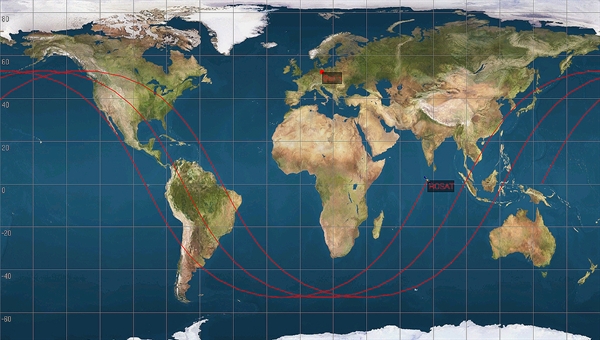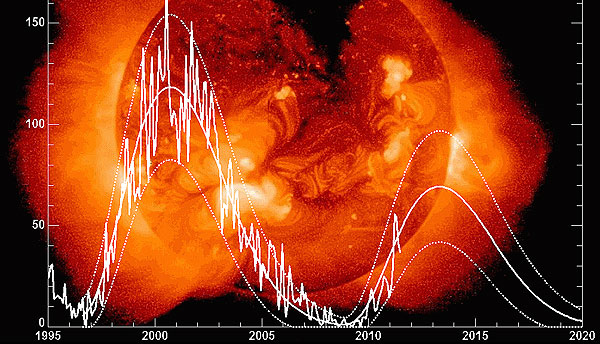
In June 2011, it was at a distance of only about 327 kilometres above the ground. Due to the fact that ROSAT does not have a propulsion system on board, it was not possible to manoeuvre the satellite to perform a controlled re-entry at the end of its mission in 1999.
When the spacecraft re-enters the atmosphere at a speed of approximately 28,000 kilometres per hour, the X-ray observatory will break up into fragments, some of which will burn up by the extreme heat.
The latest studies reveal that it is possible that up to 30 individual pieces weighing a total of 1.6 tons may reach the surface of the Earth. The largest single fragment will probably be the telescope's mirror, which is very heat resistant.

Currently, this date can only be calculated to within plus/minus five weeks.This time slot of uncertainty will be reduced as the date of re-entry approaches.
However, even one day before re-entry, the estimate will only be accurate to within plus/minus five hours .All areas under the orbit of ROSAT, which extends to 53 degrees northern and southern latitude could well be affected by its re-entry.
The bulk of the debris will impact near the ground track of the satellite. However, isolated fragments could fall to Earth in a 80 kilometre wide path along the track.
Read More of this story here at DLR Portal






No comments:
Post a Comment